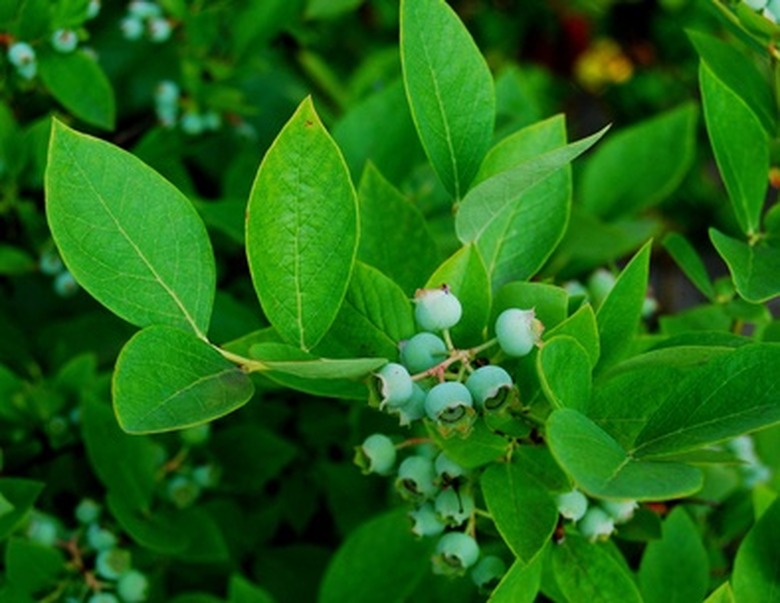Berry Leaf Identification
Berry plants are popular for their tasty, nutritious fruit. Blueberry shrubs even make good landscaping plants because of their dense, bushy appearance and attractive spring flowers. Berries grow wild in many parts of the United States, especially the coastal areas. Wild berries make delicious pies and preserves. Positively identify the berries by their leaves and fruits before consuming them, though.
Shape
Berry leaves vary considerably depending on the variety. Blueberries are related to azaleas and rhododendrons, according to "Organic Gardening" magazine and have smooth-edged, glossy leaves that are elongated oval in shape. Bramble berries, such as raspberries and blackberries, and currant-type berries, including gooseberries and elderberries, have toothed or deeply-cut leaves that are deeply textured and also elongated oval. Some gooseberries may have leaves that resemble a grape leaf or maple. Strawberry leaves are elongated oval with scalloped edges.
- Berry plants are popular for their tasty, nutritious fruit.
- Blueberries are related to azaleas and rhododendrons, according to "Organic Gardening" magazine and have smooth-edged, glossy leaves that are elongated oval in shape.
Color
Blueberry leaves are a deep green with blue edges. In the fall, blueberry leaves turn vibrant red. Strawberry leaves are also deep-green, although they are not as shiny as blueberry leaves. Bramble berry and currant-type plants produce leaves that are light to dark green. Most of them have insignificant fall foliage.
Size
Strawberry leaves are usually the smallest, since strawberries grow on low-lying plants instead of shrubs. The leaves are usually 2 to 3 inches wide and long. Other berry types may produce leaves between 2 to 4 inches wide and long.
- Blueberry leaves are a deep green with blue edges.
- Strawberry leaves are also deep-green, although they are not as shiny as blueberry leaves.
Growing Conditions
All berries need a steady supply of moisture for good leaf and fruit production. But some berries have very specific growing needs. Blueberries, for example, need a soil pH below 4.5, making them difficult to grow for gardeners with alkaline soil. They are seldom seen in the mid-western and western regions of the United States. Blackberries are less hardy than raspberries and are more likely to grow in warm climates in the southern United States and the Pacific Northwest. Raspberries and currant-type berries thrive in moist, cool climates and tolerate very cold winters. When identifying berry types, consider the region and the berries most likely to grow there.
- All berries need a steady supply of moisture for good leaf and fruit production.
- Blackberries are less hardy than raspberries and are more likely to grow in warm climates in the southern United States and the Pacific Northwest.
Growth Pattern
When identifying berry plants, consider how leaves are formed and the growth pattern of the plant. Strawberries grow on small, vegetative plants that spread through underground runners. They reach 12 inches high. Bramble and currant fruits produce leaves on erect, arching or trailing canes. These canes often have thorns and peeling bark. They grow to 4 to 6 feet high and may require annual pruning or a support system. Blueberry plants are dense shrubs that produce leaves on branches. These plants reach 2 to 4 feet high, depending on the variety.
- When identifying berry plants, consider how leaves are formed and the growth pattern of the plant.
- Blueberry plants are dense shrubs that produce leaves on branches.
